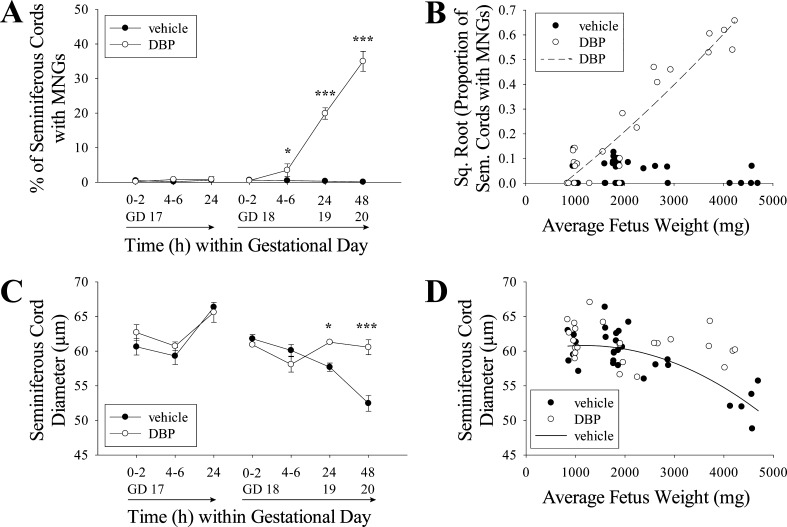FIG. 1.
DBP alters fetal testis morphology. DBP treatment did not increase the frequency of MNGs when treatment began on GD 17, but DBP significantly increased MNG frequency in rat fetal testis within 4–6 h when treatment began on GD 18 (A). The square root-transformed proportion of tubules with MNGs increased relative to fetus weight according to a quadratic trend (n = 25, R2 = 0.8837, P < 0.0001); while the vehicle-treated testis MNG frequency data passed the normality and equal variance assumptions for quadratic regression, the fit against fetus weight was not significant (n = 30, R2 = 0.1263, P = 0.1616) (B). DBP treatment did not significantly alter the seminiferous cord diameter when treatment began on GD 17, but when treatment began on GD 18, seminiferous cord diameter was significantly higher in DBP-treated than vehicle-treated testes at 24 and 48 h (C). When analyzed by fetus weight, seminiferous cord diameter (D) in vehicle-treated samples decreased according to a quadratic trend (n = 30, R2 = 0.6104, P < 0.0001), while DBP-treated samples (n = 25) did not significantly fit any linear (R2 = 0.0566, P = 0.2522) or quadratic (R2 = 0.0843, P = 0.3794) relationship with fetus weight and showed no obvious decrease in diameter. To correct for nonnormal distribution, MNG data were converted to proportions and square root transformed, and transformed data were used for ANOVA and regression analyses. All pairwise comparisons were made by two-way ANOVA followed by the Holm-Sidak test (*P < 0.05, ***P < 0.001). Values in A and C are mean ± SEM.

